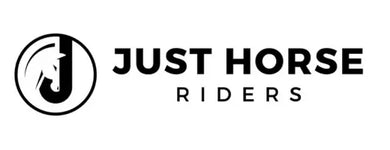Mastering Seasonal Horse Care: Expert Tips for Autumn
As the seasons transition from summer to autumn, it is crucial to review and adjust your horse care routine to ensure the optimal health and wellbeing of your equine companion. This article, inspired by the principles outlined in a piece from Horse & Hound, will guide you through the key aspects of horse care that need attention during this period.
Rugging Your Horse
When it comes to rugging your horse, it's essential to understand that horses have a wider thermoneutral zone compared to humans and may not require as much warmth. Over-rugging can be detrimental, especially as the temperatures begin to drop. Native breeds are generally more adaptable to cooler temperatures, but older, underweight horses, and breeds with thinner coats may benefit from lightweight rugs.
- Assess Your Horse's Needs: Consider the age, breed, and health status of your horse when deciding on the type and weight of the rug.
- Monitor Temperature: Keep an eye on the temperature and adjust the rugging accordingly to prevent overheating.
Clipping Your Horse
As the days get shorter and temperatures cooler, horses tend to grow thicker coats. Clipping can be a vital part of their care to prevent overheating during exercise.
- Choose the Right Clip: Different clipping styles such as trace clips or full clips are recommended based on the horse's activity levels. For example, a horse that is heavily exercised may benefit from a full clip, while a less active horse might only need a trace clip.
- Clipping Techniques: Ensure you use proper clipping techniques and maintain your clippers to avoid causing discomfort or injury to your horse.
Turnout and Stabling
Continuous turnout is highly beneficial for horses, provided there is adequate shelter. However, changes to stabling and diet should be gradual to prevent health issues such as colic.
- Gradual Changes: As advised by the British Horse Society, make any changes to stabling and diet gradually to allow your horse's digestive system to adjust.
- Provide Shelter: Ensure your horse has access to shelter during turnout to protect them from harsh weather conditions.
Feeding Your Horse
The dietary needs of your horse can vary significantly with the change in seasons.
- Adjust Energy Intake: Post-summer, horses may require less energy intake, especially if they are less active. Conversely, older horses may need more forage or hard feed as they are prone to weight loss in winter.
- Customize Diets: Tailor your horse's diet based on their age, activity level, and individual needs to ensure they receive the necessary nutrients.
Equine Insurance
Equine insurance is a critical component of comprehensive horse care, providing protection against unexpected health and other risks.
- Tailored Insurance: Consider insurance products that can be tailored to suit your horse's individual needs. These can include covers for vet’s fees, saddlery, complementary treatments, dental treatments, and personal accident cover.
- Expert Advice: Consult with insurance experts, such as those from The Insurance Emporium, to find the best insurance options for your horse.
Conclusion
Preparing for the upcoming colder months by adjusting your horse care routine is essential for maintaining your horse's health and wellbeing. By focusing on rugging, clipping, turnout, stabling, and feeding, and considering equine insurance, you can ensure your horse is well cared for throughout the seasonal changes.
Further Research Topics
For those looking to delve deeper into these topics, here are some suggestions for further research:
- Seasonal Changes in Horse Care: Explore how different seasons impact horse care and the specific adjustments needed.
- Best Practices for Horse Rugging and Clipping: Detailed guides on the best practices for rugging and clipping, including tips on choosing the right equipment and techniques.
- Health Benefits and Risks of Different Turnout and Stabling Routines: Investigate the health implications of various turnout and stabling strategies.
- Nutritional Needs and Diet Changes for Horses Across Various Seasons: In-depth analysis of how dietary needs change with the seasons and how to adjust feeding plans accordingly.
- Equine Insurance Options and Considerations: Comprehensive reviews of different insurance products and how to choose the right coverage for your horse.
- Preventing Colic in Horses During Seasonal Changes: Strategies and best practices to prevent colic, a common health issue during seasonal transitions.
- Clipping Techniques and the Care of Clippers: Detailed guides on clipping techniques and how to maintain clippers to ensure safe and effective use.
By addressing these topics, you can develop a more comprehensive understanding of how to care for your horse during the transition from summer to autumn, ensuring their health and wellbeing are prioritized.
References: [“Now is the ideal time to review your routine” by Horse & Hound](https://www.horseandhound.co.uk/) - March 15, 2022; [The Insurance Emporium](https://www.theinsuranceemporium.co.uk) - August 28, 2023; [British Horse Society](https://www.bhs.org.uk/)

